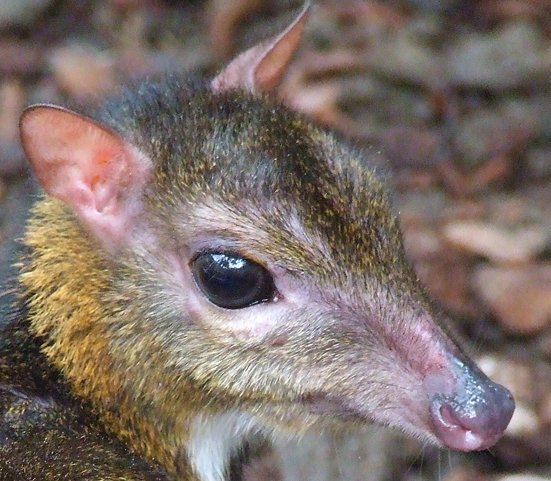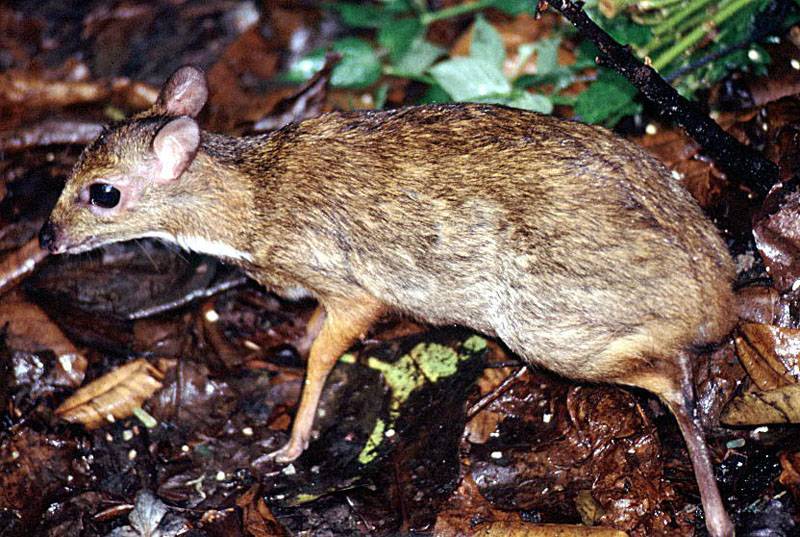The lesser mouse-deer (Tragulus kanchil), also known as the lesser Malay chevrotain or kanchil, is a small even-toed ungulate in the family Tragulidae. It holds the distinction of being one of the smallest hoofed mammals globally, measuring around 45 cm in length and weighing about 2 kg.

Sporting a reddish-brown coat with white underparts and lacking horns, this species is widely distributed across Southeast Asia. It can be found in countries such as Brunei, Cambodia, Indonesia, Laos, Malaysia, Myanmar, Singapore, Thailand, Vietnam, and China. It inhabits various ecosystems such as tropical moist forests, swamp forests, mangrove forests, and moist savanna and shrubland.
As a herbivore (plant-eater), it sustains itself by consuming fallen fruits, fungi, shoots, and young leaves. It displays a primarily solitary and timid behavior. It is diurnal (day-active), roaming in crown-gap areas with dense undergrowth during the day and moving to higher and drier ridge areas at night.
It possesses the ability to reproduce throughout the year. The gestation period (pregnancy) lasts around 140-177 days and females may produce 2-3 fawns per year. The newly born fawn can stand within 30 minutes after birth but remains hidden in the dense brush until it’s weaned.

The lesser mouse-deer is not a true deer but shares a distant relation with them. It possesses elongated tusk-like upper canines that protrude from its mouth. These teeth serve both defensive and mating purposes.
Moreover in Indonesian and Malaysian folklore, the lesser mouse-deer is known as Sang Kancil. It symbolizes cunning and trickery ,similar to Br’er Rabbit in the Uncle Remus tales. It often outwits larger animals such as crocodiles, tigers, and elephants.
Learn more: en.wikipedia.org | animalia.bio | kidadl.com
